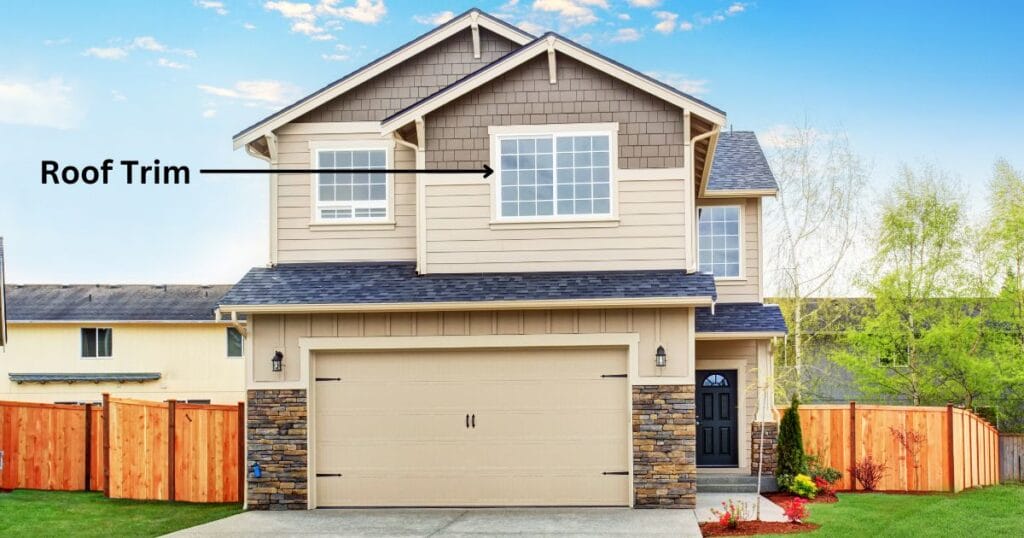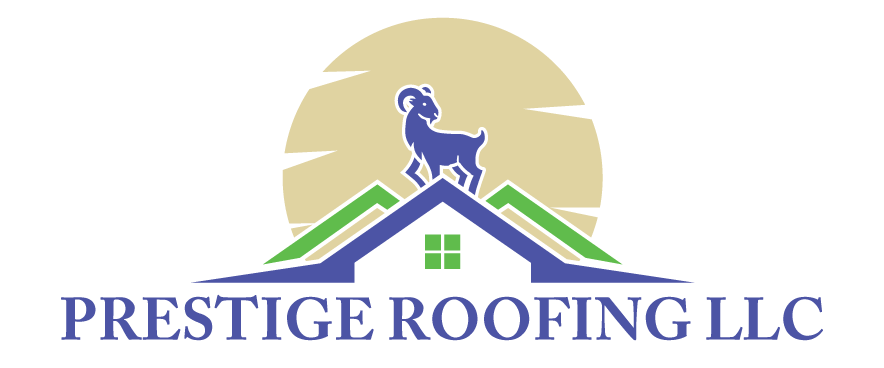The roof of a home is just as important to its exterior design as its walls and windows are, both in terms of practicality and aesthetics. Roof trim is one essential component of a roofing system that is very important, but frequently goes unnoticed. This blog post delves into the significance of roof trim, its various styles, functions, and crucial installation advice.
What Is Roof Trim?
Roof trim, also known as edge trim, is an essential part of any roof and it serves both practical and aesthetic purposes. Its key functions include preventing moisture from infiltrating the roof, guiding rainwater away from your home’s foundation, and enhancing the overall visual appeal of the roof. Crafted from materials like aluminum, steel, or vinyl, roof trim is available in diverse colors to complement the home’s overall design.
This material, positioned along the roof’s edges or corners, includes the fascia and soffit and acts as the roof’s initial defense against moisture, pests, and weather-related damages. Additionally, features like gable trim play pivotal roles in the roof’s aesthetics, ultimately improving the overall appearance and curb appeal of the building.
Recognizing the importance of investing in the visual appeal of the roof, including the incorporation of roof trim, not only enhances the roof’s protection but can also increase the resale value of a home and makes it more attractive to potential buyers.
Types of Roof Trim
Now that you know what roof trim is, let’s delve in to its different types so you make the best decision for your home:
1. Barge Boards
Barge boards are vital components of a roof positioned at the gable ends. Serving both practical and decorative purposes, they safeguard the roof structure and enhance the visual appeal of a property’s exterior. These boards are attached to the projecting gables of a roof, offering strength and protection by concealing the exposed end of the rafters.
Crafted from materials like wood, fiber cement, or oriented strand board (OSB), these boards come in various colors and coatings to match diverse architectural styles. Decorated with carved ornaments, barge boards come in various styles like square, bullnose, and flat. Beyond aesthetics, barge boards play a crucial role in shielding the roof and building from water damage.
2. Gutters and Downspouts
The next are gutters and downspouts, which play an important role in preventing water damage by directing rainwater away from the roof and the property’s foundation. Particularly important in areas that are prone to heavy rainfall or snow, these are essential for protecting homes from extensive and costly water-related issues.
Gutters, situated along the roof’s edges, collect and redirect rainwater, preserving the integrity of the roof, foundation, and other structural elements. They are typically made from materials like aluminum, copper, or vinyl and are available in various sizes and colors to match diverse architectural styles. On the other hand, downspouts are vertical pipes that can carry water from the gutters to the ground, preventing water damage and erosion.
3. Eave Trim
Eave trim, situated at the roof’s edge, plays a vital role by extending over the building’s side and is often used alongside gutters. This essential component serves both practical and decorative functions, offering protection and a polished appearance. Also referred to as the drip edge, it is crucial for redirecting rain run-off away from fascias and soffits, preventing potential water damage.
Eave trim comes in various styles and materials like metal, plastic, or vinyl, with diverse colors and coatings to match different architectural styles. The proper installation of eave trim is essential to uphold the building’s structural integrity and to safeguard against water damage.

4. Gable or Rake Trim
The gable or rake trim is used to finish the edges of a gable roof, where the roofing material meets the walls. Typically made of metal, vinyl, or fiber cement, gable trim protects the ends of a home from moisture and wind damage. Ensuring a watertight seal when combined with sealant, the gable trim is essential for achieving a polished and complete aesthetic appearance of the gable.
5. Ridge Cap Trim
Ridge cap trim is a vital component that covers the joint between two roof panels, preventing water infiltration and ensuring a weatherproof seal at the roof’s peak. Its primary role is to protect the roof from water damage. Available in various materials like vinyl, plastic, and metal, ridge cap trims come in different colors to match the roofing system.
They are made for easy and quick installation, offering a durable solution for covering the roof ridge. By working in harmony with the roofing system, they strengthen, seal, and protect the entire roof from moisture intrusion.
6. Peak Trim
Peak trim, also referred to as peak flashing or high side eave trim, is designed to cover where two roof planes meet at the peak of the roof. Similar to a ridge cap, its main function is to prevent water, snow, and ice from infiltrating underneath the roof. This trim is commonly used on roofs with a single slope, capping off the high end.
Beyond its functional role, peak trim is indispensable for achieving a polished appearance on the roof while providing protection against the elements.
7. Endwall Flashing
Endwall flashing covers the joints between roof and the building’s end wall, stopping water from getting in and causing damage. It’s usually put around places where the roof meets or connects to a wall. It’s made from tough materials like corrugated steel and aluminum and is built to withstand different weather conditions.
8. Sidewall Flashing
Sidewall flashing is a crucial part of roof installations, serving to prevent water from seeping into buildings. Positioned along the side of a roof, its primary role is to divert water away from the wall and onto the roof, facilitating proper drainage. Without sidewall flashing, water running down the roof can infiltrate the building, leading to potential damage. The installation process, typically done before endwall flashing, is essential for effective water diversion.
9. Pitch Change or Transition Flashing
Pitch change or transition flashing is used to ensure a seamless transition between different roofing materials or slopes, particularly when there are two different roof pitches. Its primary role is to prevent water leakage at the meeting point of these slopes, creating a smooth drainage path.
Available in various materials such as metal, it can be customized to match specific roof pitches, ensuring a watertight seal and protecting against potential water damage.
10. Valley Trim
The last is valley trim, a specialized type of trim designed to cover the joint where two roof panels meet in a valley. Available in materials like aluminum, it comes in different sizes and colors to match the roofing system and building style. This trim is typically secured using non-corrosive nails, ensuring a watertight seal and protecting the roof from potential water damage.
Also Read: Roof 101: Your Pictorial Guide To The 19 Essential Parts Of A Roof
Installation Tips
When installing roof trim, a systematic approach ensures a proper fit and functionality. Here’s a breakdown of the process:
#1. Prepare the Area:
Thoroughly clean the roof edge by removing debris, dirt, and old sealant. A clean surface is crucial for a secure and long-lasting attachment of the trim to the roof edge.
#2. Measure and Cut:
Accurately measure the roof edge using a tape measure to ensure a proper fit. When cutting the trim, maintain straight and clean edges for precision. Refer to the manufacturer’s guidelines for specific cutting techniques based on the type of trim.
#3. Attach the Trim:
Use appropriate fastening methods such as nails, screws, or adhesive, depending on the trim type and roof material. Follow recommended intervals and drive fasteners straight to avoid damage. If using adhesive, ensure compatibility with materials and weather conditions.
#4. Seal Joints:
Seal joints and seams to prevent water infiltration, especially in areas with heavy rainfall and snow. Apply sealant or adhesive to the joints as recommended for the specific trim type. Proper sealing preserves the roof edge’s integrity and prevents water damage.
Conclusion
To sum it up, roof trim plays a major role in both the aesthetic appeal and functionality of a home. For homeowners seeking to maintain and elevate their property, understanding the functions, styles, and installation tips for roof trim is essential. Prestige Roofing LLC offers a range of options to explore, enabling homeowners to select roof trim that perfectly complements their home’s style while meeting functional requirements for an enduring roofing system.
Are You Looking For The Best Roof Trim Services In Wisconsin?
At Prestige Roofing LLC, we offer expert assistance for roof trims in De Pere, WI, and neighboring areas. Our seasoned professionals prioritize your satisfaction, helping you choose the best roof trim for your home. With combined experience of over 50 years, we offer transparency, dedication, and quality workmanship with a 10-year labor warranty, ensuring your long-term peace of mind.
Trust Prestige Roofing LLC for a dependable and aesthetically pleasing roof that stands the test of time. Contact us today at (920) 791-0414 for a free estimate and inspection.

